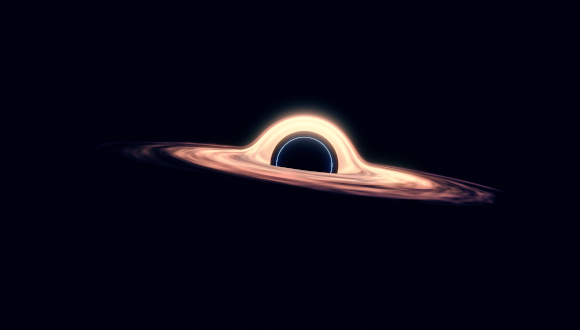TAU researchers identify heaviest known black hole in a binary star system in the Milky Way

Black hole more than three times heavier than the known black holes in our galaxy
Support this researchAn international team of researchers, with the participation of researchers from Tel Aviv University (TAU) led by Professor (emeritus) Tsevi Mazeh of TAU’s Raymond and Beverly Sackler School of Physics and Astronomy, have discovered a star which orbits a black hole 33 times heavier than the sun’s mass and lies 1,500 light-years away from Earth. The black hole, discovered using data from the European Gaia spacecraft, is more than three times heavier than the other known black holes in our galaxy.
An organization of hundreds of scientists across Europe processes the data coming in from the spacecraft and makes it accessible to the entire scientific community. The research group led by Professor Mazeh participates in the study of binary star systems discovered using the spacecraft data. The research was published on April 8, 2024, in Astronomy & Astrophysics.
The Gaia spacecraft was launched by the European Space Agency in 2013 and since then has been regularly measuring the position and brightness of over a billion stars in the Milky Way galaxy with unprecedented precision, equivalent to accurately determining the position of a single grain of sand on the moon to the millimeter.
The large sample of binary stars should also include systems which include a black hole, one of the rarest celestial objects in the universe. The existence of a black hole is one of the most amazing phenomena in the universe, the existence of which was predicted by Einstein’s theory of general relativity in 1939.
According to the theory, when the fuel for the nuclear combustion process that takes place in the core of a star runs out, it collapses in on itself, towards its center. If the star is massive enough, all the remaining matter collapses into a single point of infinite density.
It is possible, therefore, to see the black hole as the “corpse” of a star that has ended its life cycle and collapsed in on itself. Astrophysicists are still trying to understand the extreme conditions that lead to the collapse of matter into the central point. As a result, every discovery of a black hole is accompanied by enormous excitement among astronomers.
It is very difficult to discover black holes, since light cannot overcome the strong gravitational force in its vicinity. When a black hole is in a binary system with a normal star, the motion of the visible star is used to measure the mass of its invisible partner and prove that it is indeed a black hole. Indeed, in a matter of just a few years, the Gaia spacecraft has already discovered two black holes.
Expecting that the data that continues to be collected by the spacecraft will lead to the discovery of more black holes, Professor Mazeh together with Professor Laurent Eyer of the University of Geneva established a small team to find black holes using the spacecraft’s data; the team includes scientists from France, Germany, Spain, Belgium, Poland, and Switzerland. While examining the new data, the team came across a binary system containing a special black hole, the likes of which has never been found before, with a mass of 33 solar masses, around 1,500 light years away from the planet Earth. The new black hole is more than three times heavier than any other known black hole in the Milky Way galaxy. The binary system, named Gaia BH3, contains an ordinary star that seems to have formed more than ten billion years ago, when our galaxy was still very young. The star orbits the black hole in an 11-year cycle.
“This is an exciting discovery of the heaviest black hole in a binary system known today in the galaxy,” Professor Mazeh says. “About thirty years passed from the first hypothesis of the existence of a black hole until the discovery of the first black hole, and more than fifty years passed before we were able to discover Gaia BH3, the binary system with the longest cycle known today.
“It is amazing how humankind manages to navigate the vast expanses of the universe and discover such mysterious objects. I am convinced that the discovery will lead to a new mode of thinking regarding the presence and prevalence of the black holes that cruise through the expanses of our galaxy.”